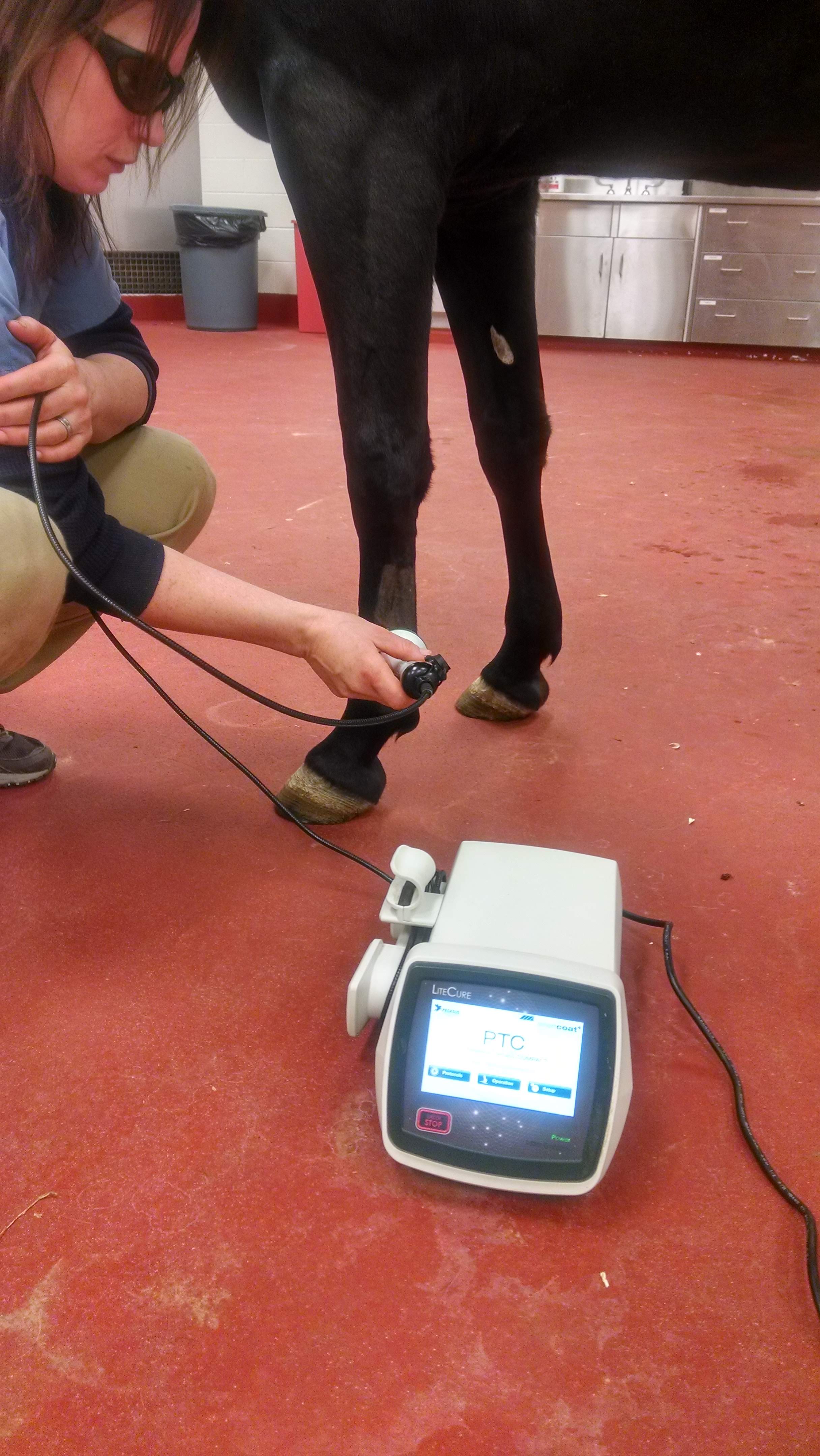Equine Therapy Programs: Transforming Lives One Ride at a Time
Equine Therapy Programs: Transforming Lives One Ride at a Time
Blog Article
Evaluating the Performance of Laser Therapy in Horse Treatment for Injury Rehabilitation
The evaluation of laser therapy's efficiency in equine injury recovery pivots on multiple elements, consisting of recuperation time, discomfort mitigation, and tissue regeneration. Vets regularly observe superior results with laser treatment contrasted to conventional methods, positioning it as a vital component in equine treatment. Equine Therapy.

Understanding Laser Therapy
Laser treatment has become a pivotal tool in vet medication, specifically in the therapy of equine conditions. Known for its non-invasive nature and efficacy, laser treatment entails the application of certain wavelengths of light to promote tissue repair work and decrease inflammation. This healing method is significantly favored for its ability to increase the recovery process in horses struggling with a selection of bone and joint injuries and chronic problems.
The key system behind laser treatment is its ability to boost cellular features. Furthermore, laser treatment promotes vasodilation, boosting blood flow and oxygen distribution to damaged cells, therefore expediting healing.
In equine medicine, laser treatment is especially beneficial for problems such as tendonitis, osteoarthritis, and injury healing. The method is lauded for its pain-relieving homes, allowing horses to reclaim movement and feature much more swiftly. Veterinarians likewise value its minimal side results compared to other treatment techniques, making it a reputable and secure option for equine treatment.
How Laser Therapy Functions
To understand just how laser therapy works, it is vital to dig right into the interaction between light energy and organic tissues. Laser treatment, also understood as Low-Level Laser Therapy (LLLT) or photobiomodulation, utilizes details wavelengths of light to penetrate tissues and boost cellular procedures. The mechanism depends upon the absorption of photons by cell chromophores, primarily within the mitochondria, which are critical for energy manufacturing.
Upon absorption, these photons activate a collection of biochemical modifications, improving mitochondrial feature and bring about increased adenosine triphosphate (ATP) production. This increase in ATP speeds up cellular metabolic rate, advertising tissue repair work and regrowth. In addition, laser therapy modulates inflammatory actions by influencing cytokine degrees and decreasing oxidative tension, consequently relieving pain and swelling.
Another significant facet of laser treatment is its function in improving microcirculation. The therapy advertises vasodilation, boosting blood circulation and oxygen distribution to damaged tissues. This assists in the removal of cellular particles and sustains the expansion of fibroblasts and collagen synthesis, essential for wound recovery.
Scientific Evidence
The efficacy of laser therapy in equine treatment has been confirmed via various medical research studies, showcasing its healing possible throughout a range of conditions. A study carried out by Turner et al. (2012) demonstrated that equines treated with low-level laser therapy (LLLT) for ligament injuries showed increased recovery contrasted to those obtaining standard therapies.
In a similar way, study by Johnson and associates (2015) focused on equine muscle injuries, disclosing that laser treatment considerably sped up muscle fiber regrowth and decreased muscle stiffness. Professional analyses have shown that laser treatment can ease chronic conditions such as osteo arthritis.
Veterinarian Insights
Veterinary experts have significantly acknowledged the value of laser treatment in equine you can try this out treatment, pointing out both empirical evidence and direct experience. Dr. Jane Smith, a leading equine veterinarian, keeps in mind that laser treatment has revealed amazing efficacy in reducing swelling and speeding up cells repair service. "In my practice, I've observed faster healing times in horses treated with laser treatment compared to typical techniques," she states. This view is resembled by Dr. John Doe, who highlights that laser therapy uses a non-invasive alternative with marginal negative effects, making it especially suited for equine individuals.
Vets likewise value the flexibility of laser treatment. She points out that laser therapy can be tailored to the particular requirements of each horse, making my explanation sure optimal end results.

Practical Factors To Consider
A crucial aspect of applying laser therapy in equine therapy includes understanding the sensible considerations that guarantee its effectiveness and safety. It is essential to pick the appropriate laser tool, as various kinds vary in wavelength, power, and penetration deepness (Equine Therapy). Veterinarians need to be fluent in these specifications websites to customize treatment procedures properly to each injury kind
Moreover, the frequency and period of laser treatment sessions need cautious preparation to make best use of therapeutic advantages while minimizing any type of possible adverse impacts. Regular monitoring of the horse's action to therapy can guide required changes in the therapy regimen. Establishing a secure and regulated environment during treatments is likewise essential to avoid unexpected direct exposure to laser emissions, which might hurt both the steed and the trainer.
Training and certification of workers providing laser treatment are extremely important to ensure proper technique and to support security criteria. In addition, maintaining accurate records of each session, including laser settings and observed outcomes, is important for examining the total performance of the therapy and for making data-driven choices.
Verdict
Laser treatment has emerged as a reliable technique in equine injury rehabilitation, supplying significant benefits in recuperation time, pain relief, and cells recovery. For optimal outcomes, continual surveillance and personalized treatment methods stay vital in leveraging the full potential of laser treatment in equine care.
Report this page